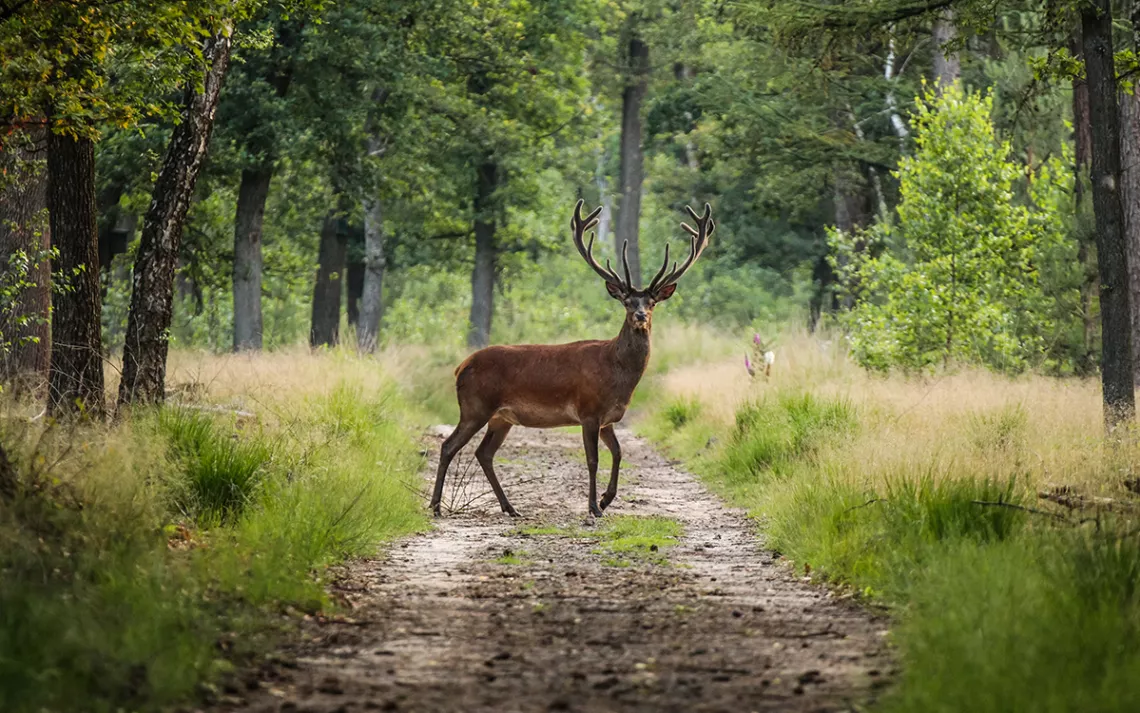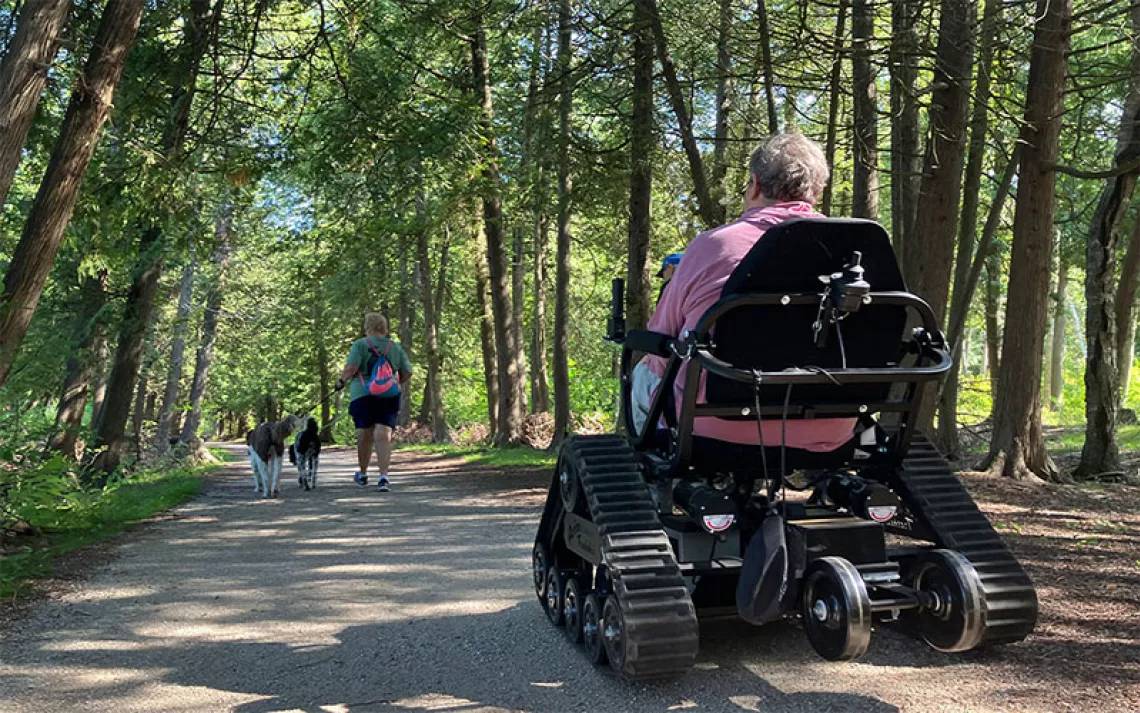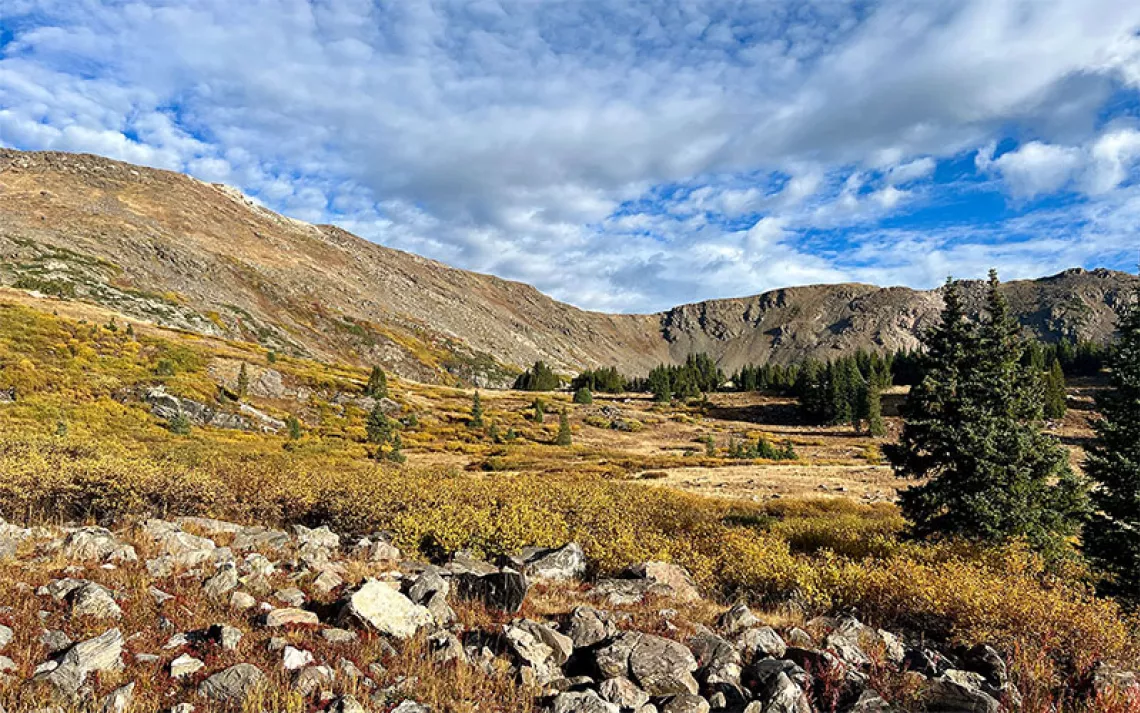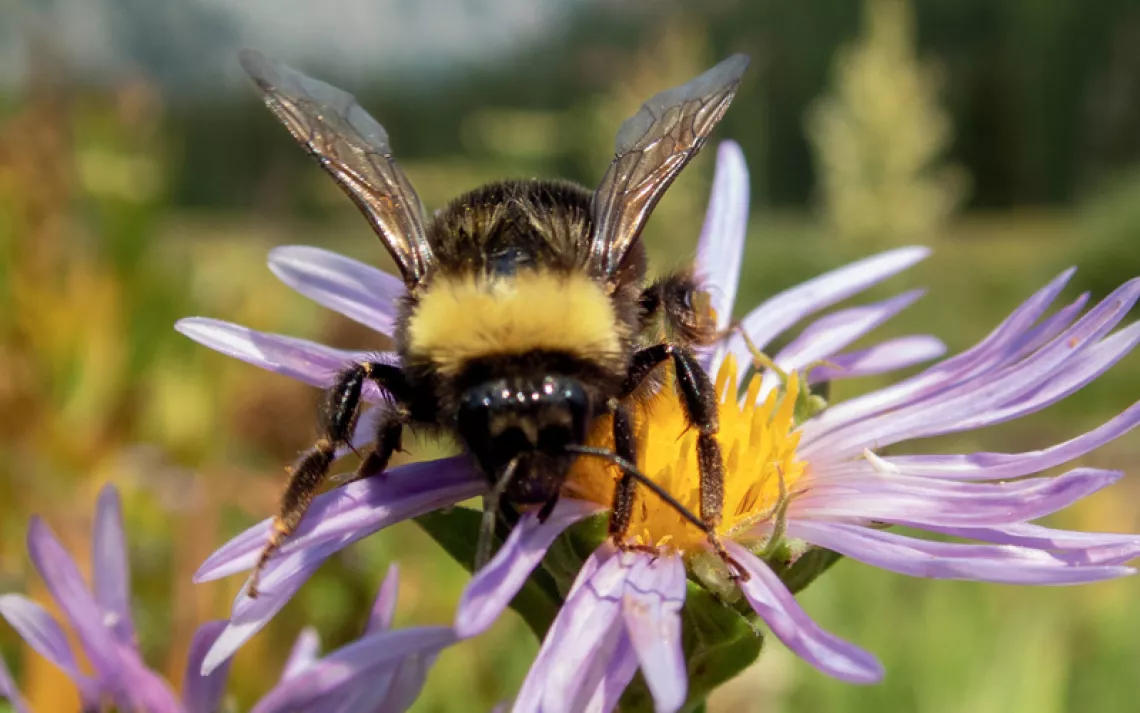The Quandary of Balancing Trails and Wildlife
One small-town fight signals a growing rift

Red deer crossing a path in a wildlife park. | Photo by Laurens Verhoeven
Vermont is a landscape cloaked in trees. Some 78 percent of the state is forested, a dense green cover of beech, birch, and maple interspersed with small villages, like the one I live in—Richmond, Vermont. My town is a place where it feels like everyone knows everyone, a tight-knit community of 4,167 people proud of their home’s abundant natural beauty.
In recent years, however, a decision-making process about building trails in Richmond’s new community forest has grown tense. The 428-acre Andrews Community Forest was created in 2018, but five years later, plans to build multiuse trails there remain mired in criticism. It is a local issue with implications that go far beyond my own backyard. Richmond’s conflict is unfolding amid growing research into the many ways that outdoor recreation—from birding to skiing—impacts wildlife. In one study, when collared Oregon elk were exposed to hikers, equestrians, and mountain bikers,the time animals spent fleeing the disturbances cut into their vital periods of rest.
“There is definitely an increasing awareness of the fact that recreation does have an impact on wildlife, and there's an increasing desire to understand what that is,” said Ethan Tapper, the forester for Chittenden County, where Richmond is located. Tapper helped create the management plan for the community forest, which was established under a conservation easement stipulating natural resource protection and public access in perpetuity. “Prior to very recently, we just assumed that recreation was completely an asset. Now we understand that it’s really important, it’s really an asset—and it's also something that does have an impact.”
That growing understanding guided the Andrews Community Forest Committee (ACFC) tasked with overseeing the property. Seeking equilibrium, they held an RFP then commissioned a trail proposal by Vermont trail developers Sinuosity and ecological services consulting firm Arrowwood Environmental. “We came down in a pretty even balance between protecting the ecological integrity of the property and providing the trail access that was being requested,” said Arrowwood Environmental partner Aaron Worthley. The initial version outlined 4.3 miles of new trails, designed to limit impact on ecological features like streams, vernal pools, and wetlands.
Caitlin Littlefield, an ecologist living in Richmond and lead scientist at the nonprofit Conservation Science Partners, joined ACFC when it was founded in 2020. “My motivation was wanting to care for the land here, and get to know my community members—and, yes, apply my conservation and ecology backgrounds,” she said. (Small-town disclosure: I know Littlefield socially, and my husband is on the ACFC. I’m also friends with a member of the group most critical of proposed trails.)
Despite the ecology-minded process, reception to the plan was mixed from the beginning, with meetings turning contentious. “It wasn't until the rubber was like starting to hit the road, in terms of actually planning, that it became really apparent that this might be kind of spicy,” Littlefield said. Public criticism of the proposed trails, she believes, reflects a mix of explicit and implicit worries.
The explicit worries have to do with issues of trail placement and type, and the possible impact on creatures like deer, amphibians, and birds. The implicit worries are something more sweeping: growing fear that as we seek to enjoy and explore and preserve natural landscapes, an essential equilibrium has been lost. Mountain biking has become more popular here, a flash point in community dialogues, but cyclists are just the most visible sign of Richmond’s growing reputation as a recreation destination. “The expansion of recreation, trails everywhere, and just a big concern that our woods are being taken over across the board,” Littlefield said. “That’s the underlying, deep-seated fear that I perceive.”
Even as participation in outdoor sports has grown in recent years, scientists have learned more about how nonmotorized recreation affects the well-being of wild animals. A 2016 systematic review of outdoor recreation’s impacts on wildlife found, perhaps counterintuitively, that nonmotorized recreation had a greater impact on wildlife health than motorized sports, like snowmobiling.
“We saw that across a broad variety of species of wildlife and types of recreation,” said Courtney Larson, the review’s lead author, now a conservation scientist for the Nature Conservancy. “The response variables that we looked at, which were species richness and abundance, are really ones that affect the population levels of the species.”
The research hints at some best practices to help wildlife, Larson said. Concentrating recreation into one part of the forest can leave other areas undisturbed, while seasonal closures are important during sensitive breeding and nesting periods. There are, however, major holes in our understanding of how the human impacts on wildlife behavior actually play out. “I haven’t seen a lot of research studies that go out and test the effect of a management strategy,” Larson said. “It’s kind of a gap between some of these research results and actually knowing what strategies we can use on the ground to minimize recreation impact.”
It’s also hard to take data from one piece of land or one population of animals and extrapolate them into a larger conclusion. “You can’t really make any broad trends, like ‘this type of nonmotorized recreation is always going to affect this particular type of species in a certain way,’” said Ashley D’Antonio, an associate professor of nature-based recreation management at Oregon State University’s College of Forestry.
Some of the most heavily used conserved land in the United States, such as Yellowstone National Park, are places with pretty healthy wildlife populations, D’Antonio noted. “That doesn’t mean there’s not behavioral changes for some of these species, but at a population level it seems like they’re doing OK,” she said. “I do think there needs to be more research heading in that direction, so we can better understand, like, ‘Are there population-level impacts? And if so, what are they?’”
That missing information poses a challenge for land managers seeking to strike a balance between healthy wildlife and the access to natural places that’s essential to human thriving.
Meanwhile, some residents are questioning a basic premise of the current plan for the land—and of much modern conservation—by asking whether access to the natural world in Richmond and beyond should be considered a conservation value at all. “In many ways, it boils down to what we mean by conservation,” said Ian Stokes, a member of the Friends of the Andrews Community Forest, a group of some eight townspeople who are vocal opponents of the trail plan. Stokes said it’s time for VLT and other stakeholders to reconsider their access-friendly approach to conserving land.
Once a trails proponent, he’s been swayed by recent research into biodiversity threats and recreation’s impact on wildlife and says that expanding recreation is incompatible with his view of the worldwide goal of preserving 30 percent of lands and waters for wild nature. “Some people interpret that as ‘let’s keep these areas sort of wild, but let’s have them accessible to people,’" he said. “And other people say ‘no, really conservation means setting aside 30 percent for other species, and humans should just stay out of it.’”
That perspective is hard to square with the ACFC charter to ensure “meaningful public access and outdoor recreation opportunities.” Taking expanded access off the table might also pose challenges for any future community-led efforts to conserve land with the promise of local recreation. What’s more, the Vermont Land Trust (VLT), which helped plan and finance the purchase of the land, argues setting aside land for recreation is integral to conserving wild places.
“People would not care to conserve land if they did not have a connection to it,” wrote VLT project director Rebecca Roman in an email. “They cannot develop a connection to the land without access to it.” Ethan Tapper, the county forester, agreed. “That’s how most people develop a relationship with forests and other ecosystems—it’s on a trail,” he said.
While Richmond already has extensive trail networks open to the public, they are largely on private land. This reflects a broader pattern in Vermont: 80 percent of the state’s forests are private, leaving just 20 percent under public ownership. That means places like Andrews Community Forest, a small wood by the highway that was pasture in the 1800s, can become unlikely proxy battlegrounds for larger ideas about land use and beyond.
Many involved think that’s exactly what’s happened. As the fight over trails in Andrews Community Forest has unfolded, positions have seemed to harden. Public meetings still engage with the minutiae of trail plans, but underlying the debate are strong feelings that point to the thorniest issues we face today. In the coming years, communities small and large must decide how they will share resources—with one another, with newcomers, with wild nature—amid a rapidly changing world. Such questions are urgent; there are few easy answers.
 The Magazine of The Sierra Club
The Magazine of The Sierra Club







